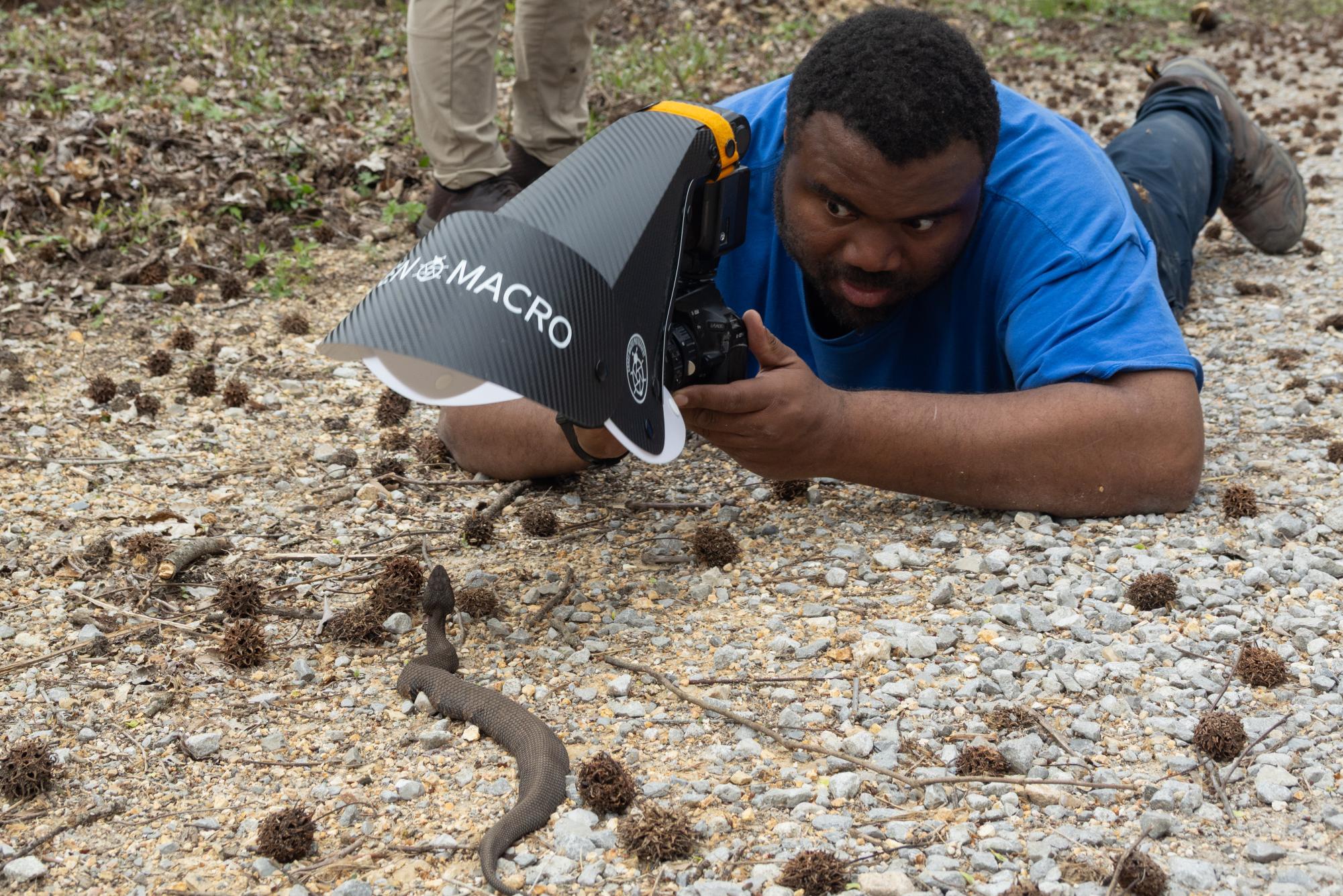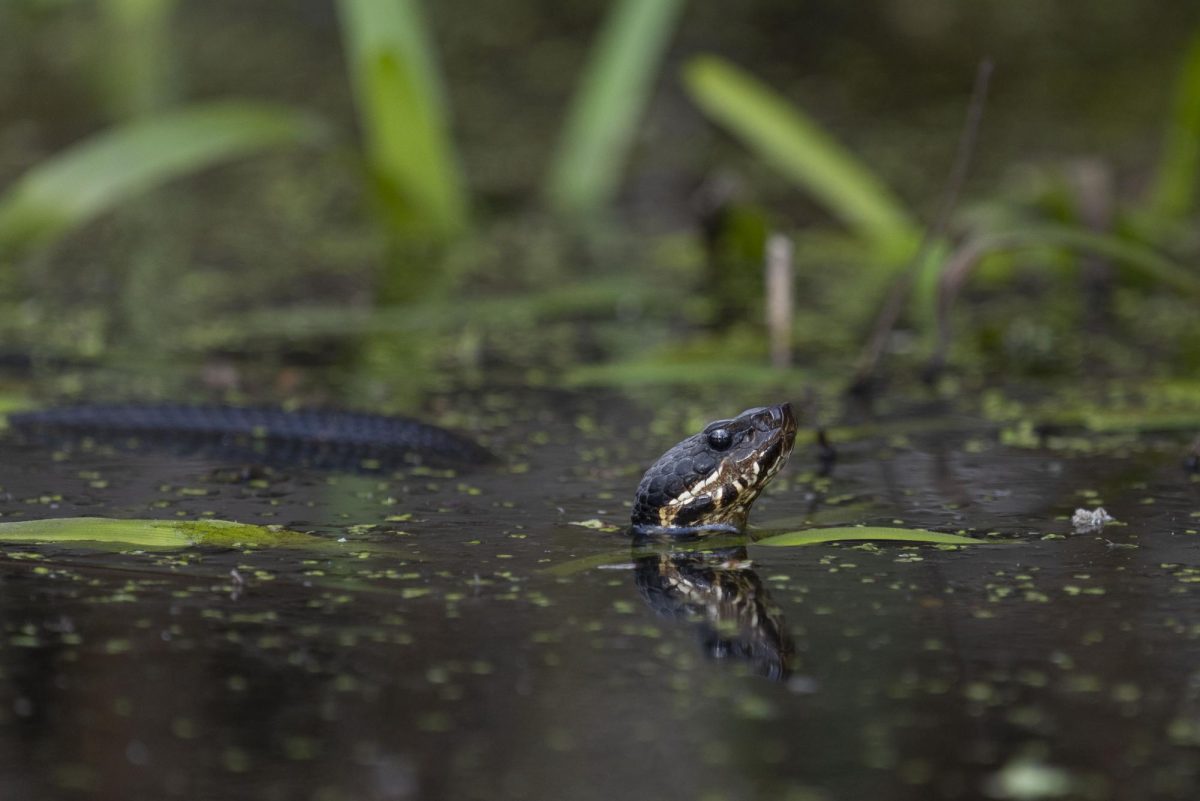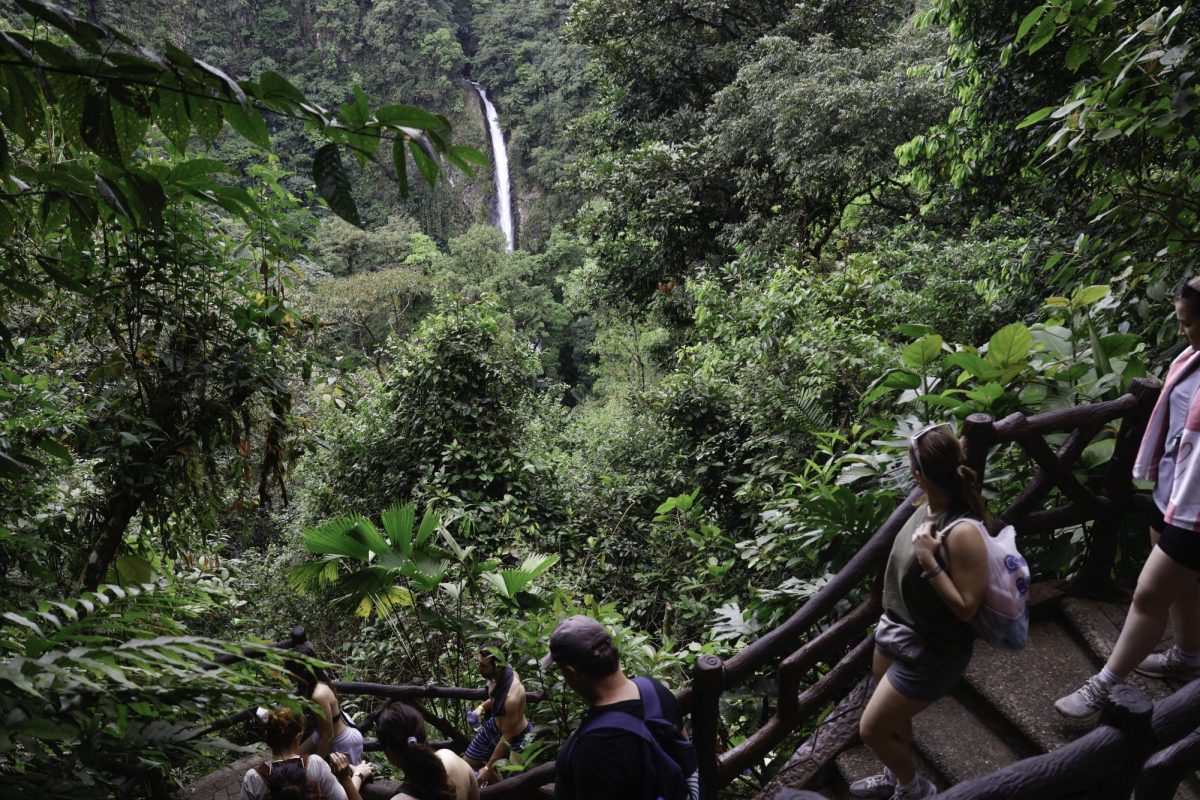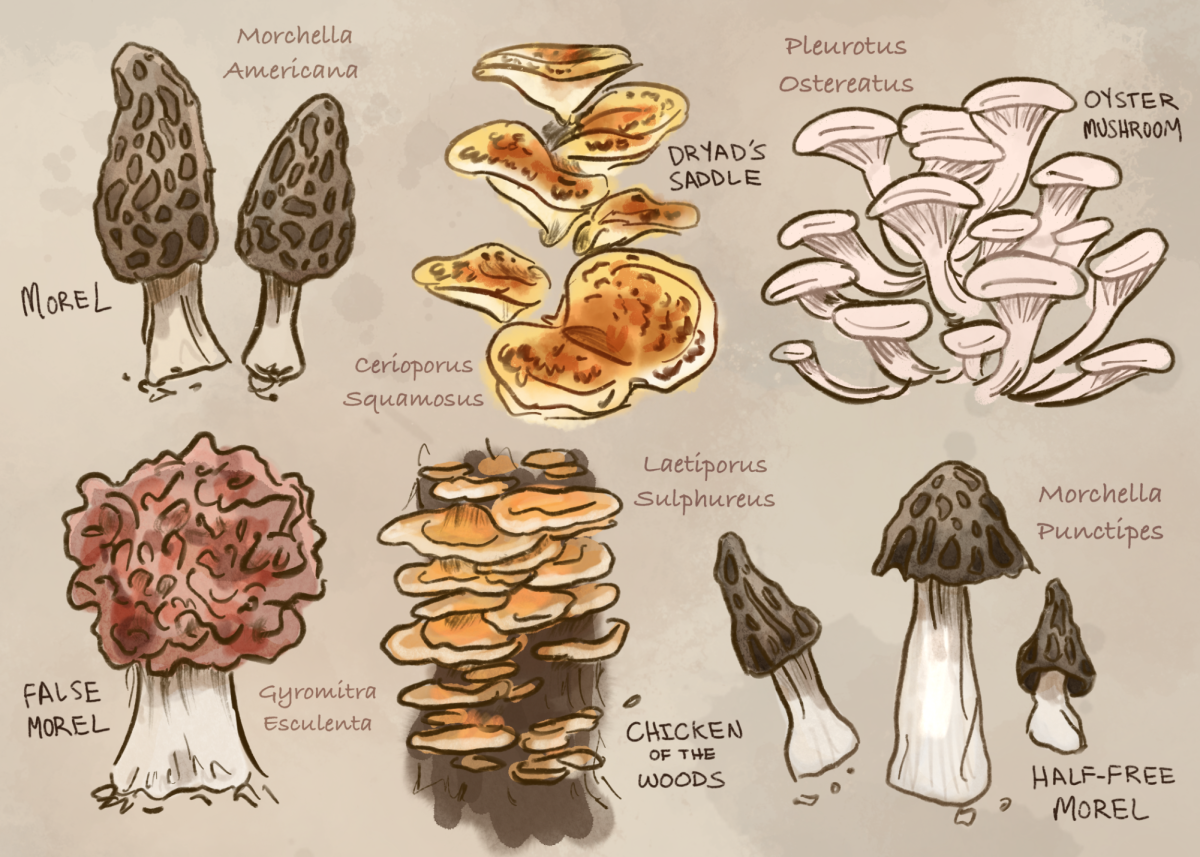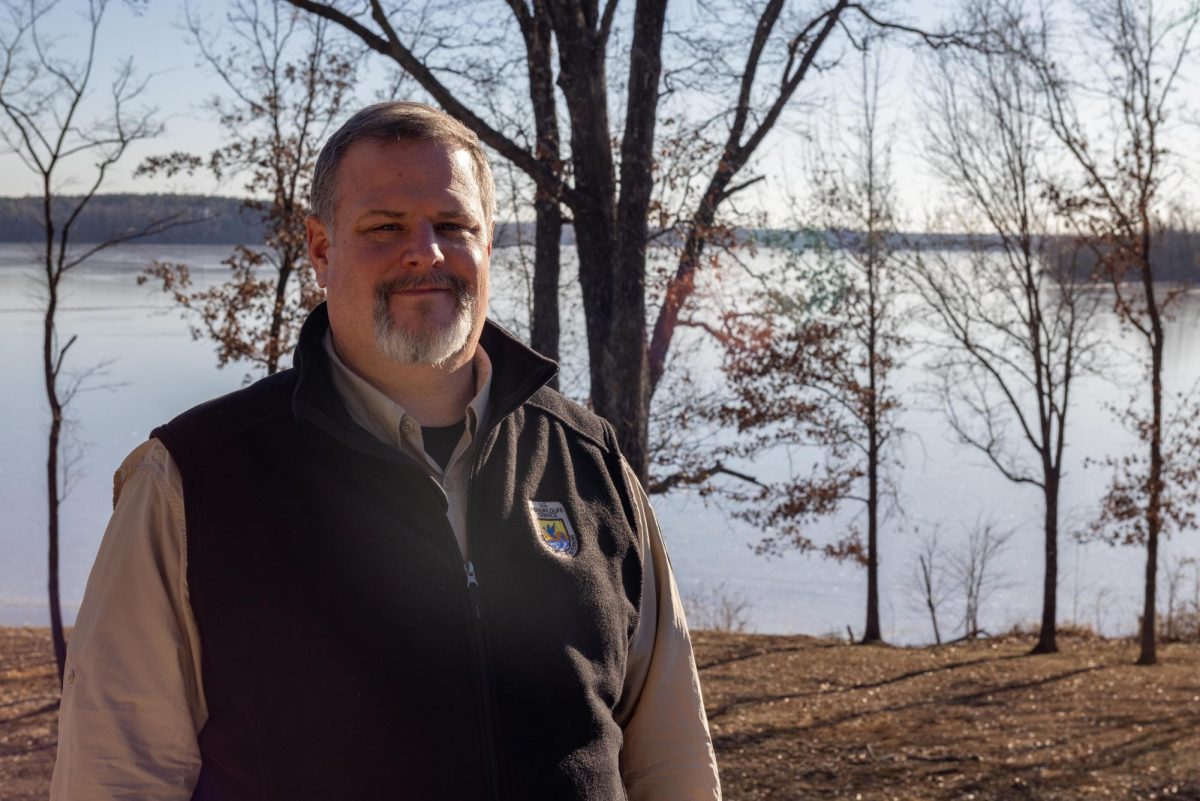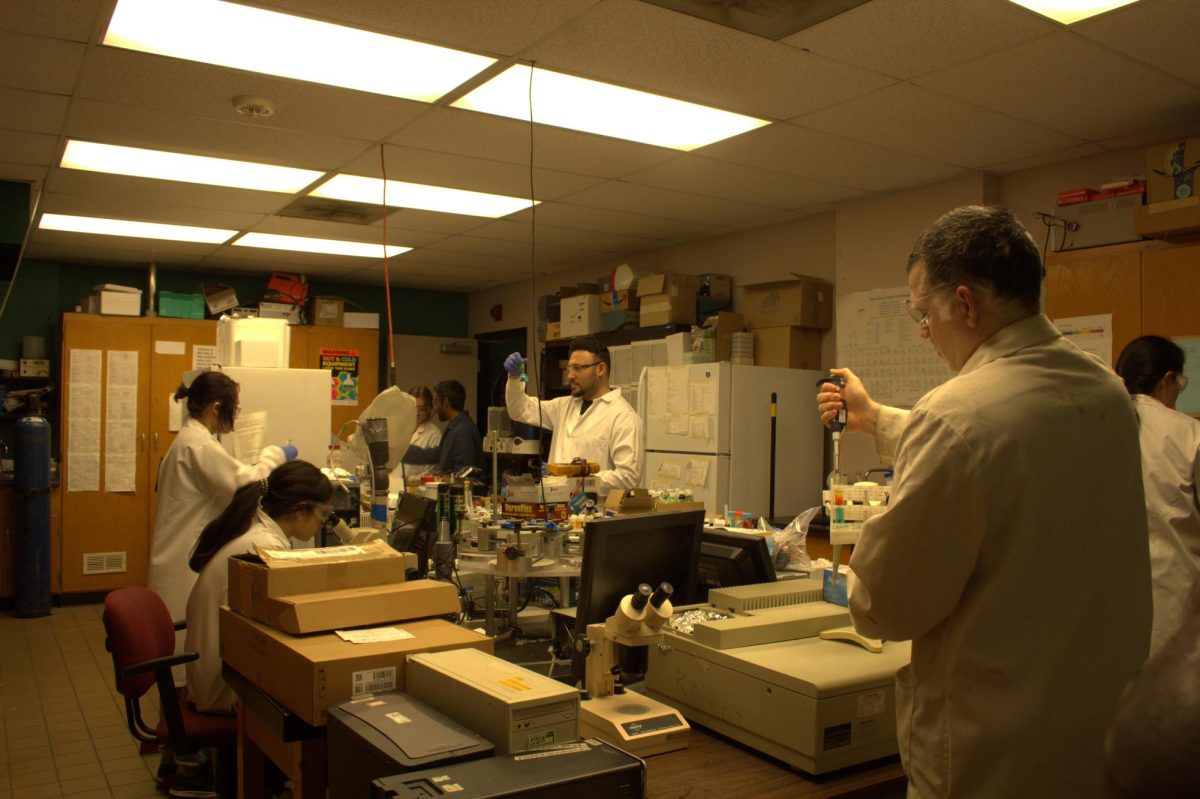Why did the snake cross the road? To slither to its summer home.
After a short period of cold weather, the snakes were out, crossing the road on a warm Thursday in spring. Thousands of snakes migrate across Forest Road 345 in Shawnee National Forest in the spring and fall, earning the road the name “Snake Road.”
A nearly 2.5-mile stretch of gravel road in Union County, Illinois divides the bluffs of LaRue Pine Hill from the LaRue Swamp, and a sign at the entrance reads in big bold letters, “You are about to enter a unique and fragile ecosystem,” next to a brown gate which closes the area off to only foot traffic.
Advertisement
Consulting biologist John Palis had been hiking the road for a bit, recording data in his small, pocket-sized notebook, keeping tabs on this unique phenomenon.

The road, so quiet the creaking of trees could be heard, was vastly empty aside from Palis. A small number of visitors crossed his path on Thursday evening, but the visitors who showed up came from all over, including Illinois, Missouri, Wisconsin and Pennsylvania.
According to a 2016 study by Palis, the swamp is “an abandoned meander channel of the Big Muddy River, from which it is now separated by an earthen levee” and that the swamp is fed with cold water from springs at the base of the bluffs.
Advertisement*
The snakes live in the swamp in the summer and in the bluffs in the winter. In a 2018 study, Palis said that the snakes seek shelter under the bluffs below the frost line to avoid “freezing and desiccation.”
The swamp is appealing for the snakes because it contains an abundance of food sources. Palis said that the snakes will eat a variety of animals including amphibians like frogs and salamanders, fish and even other snakes.
Because of the migration, Shawnee National Forest closes the road in the spring and fall to protect the snakes. “Because it’s a road, it’s dangerous for a snake if it’s not closed,” Palis said. “People will drive up and down the road, and they’ll run them over.”
The chance to see species native to southern Illinois sent Kyle Taylor and Adrian Bara-popa on a 13-hour drive from Philadelphia to Snake Road for a glimpse into the unique and fragile habitat. Both Taylor and Bara-popa quickly connected with Palis and his two friends Bill Rodgers and Hugh Gilbert, exchanging stories of snake encounters and wildlife stories as they walked down the gravel road in search of more snakes – a hodge-podge group of people all with a similar interest.

Taylor is a hobbyist and wildlife photographer who has spent his life working in conservation and wildlife, including the Philadelphia Zoo and the Academy of Natural Sciences. His interests have taken him around the country and places like Puerto Rico looking to see a variety of new species, but he is in stage 5 renal failure and awaiting a new kidney. He can no longer leave the country while on dialysis, and his hobby has become an outlet, he said. As soon as he can get a new kidney, he plans on going to Ecuador to see an anaconda.
“America’s huge, this country is insanely large, and in different parts there are species you just can’t find anywhere else,” Taylor said. “A good example is at this site, the cottonmouth. We don’t have cottonmouths where we are.”
Five to six years ago, Taylor rediscovered a passion from his childhood – photography. He began photographing hummingbirds and eventually all forms of wildlife, which brought him to southern Illinois where he laid flat on the gravel road, his camera just inches away from cottonmouth and other snakes.
“It really quells all of the bad thoughts, all of the anxiety, all the stress,” Taylor said. “I mean, the world right now is a crazy place, but you don’t feel that here. All you feel is the mosquitos biting you.”
Taylor counted double digits in species he had never seen before in the wild as he hiked along the gravel road, something hobbyists call “lifers.”
Snake Road also boasts a variety of species. Of the 22 species that live there, Palis recorded eight species in one day, including 21 cottonmouths, four plain-bellied water snakes, two gray ratsnakes, a ring-necked snake, a DeKay’s brownsnake, a red-bellied snake, an eastern garter snake and a Western ribbon snake.
The majority of the snakes were cottonmouths, which Palis says is normal for Snake Road. The two most common snakes at the road are cottonmouths and plain-bellied water snakes, cottonmouths making up the majority, he said.
For reptile enthusiasts or even beginners interested in learning more about snakes, Snake Road topography makes it an ideal place for snake viewing.
“I think Snake Road’s a great opportunity to come out and see snakes,” Palis said. “In the spring, the road is clear. You can see them from a distance.”
But Snake Road isn’t just a place to come and see snakes. It’s also a great place to see other swamp species. “There’s a lot of other things to see,” Palis said. “It’s not just snakes. It’s birds, it’s wildflowers, it’s butterflies.”
The community can also get engaged with research at Snake Road through the Snake Road Sentinel Program. Volunteers can record data on snakes as well as information on the road’s foot traffic, visitors and other information.
According to Shawnee National Forest wildlife biologist Mark Vukovich, the volunteer program was started in 2022 after the COVID-19 pandemic.
“The objective of the program was to get volunteers to engage in science on our national forest, specifically at Snake Road, where they could collect data for us on snakes, on visitor numbers and cars and also kind of keep an eye on the place at the same time,” Vukovich said.
“It’s grown every year,” Vukovich said. When the program was first started, he said volunteers recorded their findings on hard-copy data sheets, but now the program offers the additional option of an app, Survey123. “I think we’ve been successful in engaging a lot of citizens and science on our national forest at Snake Road.”
The app is also accessible for visitors who are not familiar with snakes. “In the digital app, you can take pictures of the snake as well to confirm the ID,” Vukovich said. The app also gives users the option of denoting species as an unknown snake.
The volunteer data is then used by Shawnee National Forest to monitor the road during migration season, telling biologists like Vukovich whether the road closure dates need to be adjusted to protect the snakes.
The road closure dates are March 15th through May 15th and September 1st to the beginning of duck season in mid-November. According to Vukovich, the fall dates have been extended from the previous end date of Oct. 31.
The Snake Road Sentinel Program also helps biologists record key information about the snakes like size and location, according to Vukovich. Volunteers can record size categories, whether the snake is adult or juvenile and whether the snake is injured or diseased.
Vukovich also said that the program is looking for diseases like snake fungal disease. “It’s a fungus that infects snakes,” he said. “And they’ll have symptoms of the disease of some growth around their face and their eyes.”
The data also tells biologists at the Shawnee National Forest about the forest’s usage. “We get thousands of people there,” Vukovich said. “Non-consumptive use of our national forest is pretty high.”
“A lot of people say, ‘Well, the hunting is the big revenue on the Shawnee.’ I have data that suggests Snake Road is pretty high up there economically based on the numbers I see,” Vukovich said. He said that people come from around the world to see the snake migration, including people from Colorado, Canada and Germany.
Photo editor Enan Chediak can be reached at echediak@dailyegyptian.com or @enanchediak on instagram. Editor-in-chief Lylee Gibbs can be reached at lgibbs@dailyegyptian.com or @lyleegibbsphoto on instagram.
Advertisement



